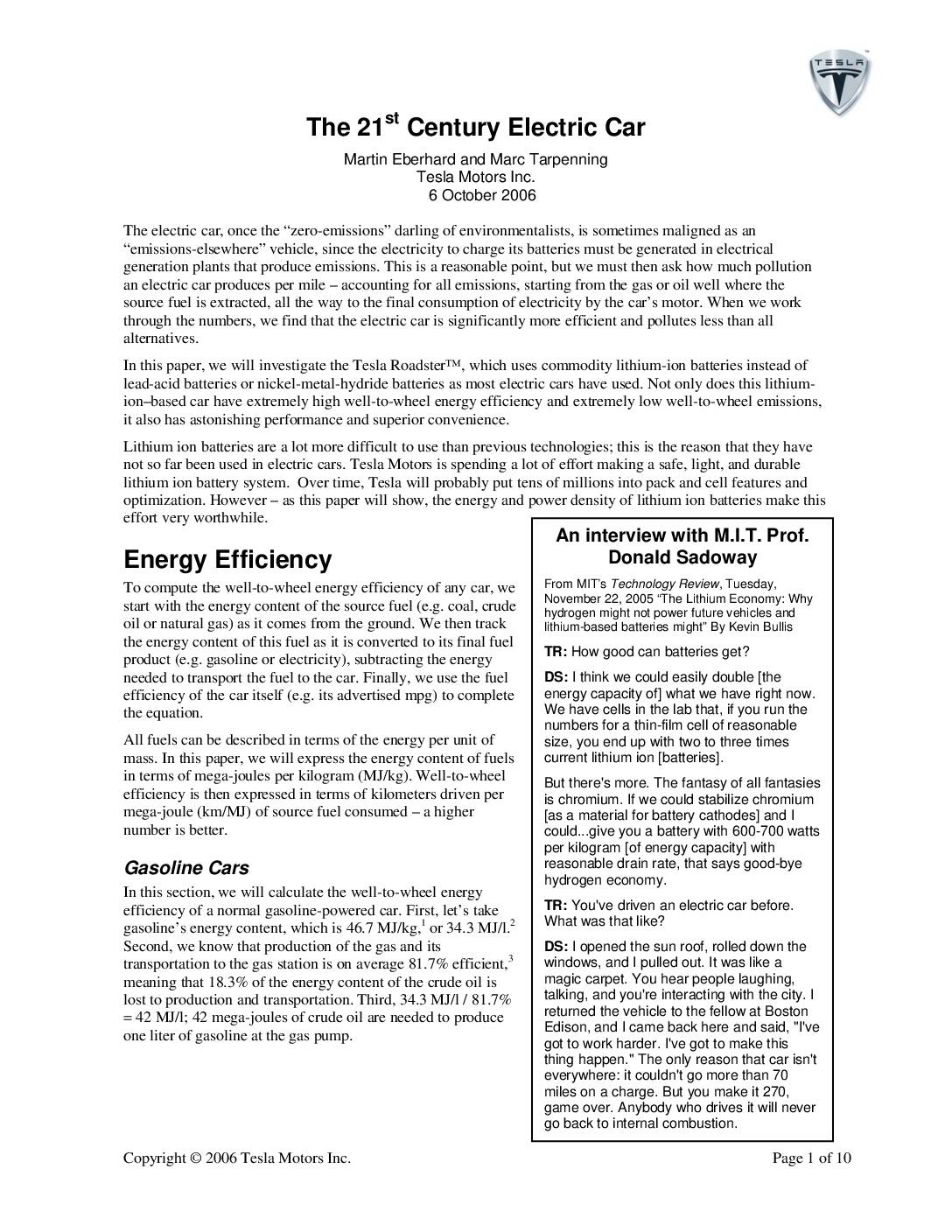The electric car, once the “zero-emissions” darling of environmentalists, is sometimes maligned as an “emissions-elsewhere” vehicle, since the electricity to charge its batteries must be generated in electrical generation plants that produce emissions. This is a reasonable point, but we must then ask how much pollution an electric car produces per mile – accounting for all emissions, starting from the gas or oil well where the source fuel is extracted, all the way to the final consumption of electricity by the car’s motor. When we work through the numbers, we find that the electric car is significantly more efficient and pollutes less than all alternatives.
In this paper, we will investigate the Tesla RoadsterTM, which uses commodity lithium-ion batteries instead of lead-acid batteries or nickel-metal-hydride batteries as most electric cars have used. Not only does this lithium- ion–based car have extremely high well-to-wheel energy efficiency and extremely low well-to-wheel emissions, it also has astonishing performance and superior convenience.
Lithium ion batteries are a lot more difficult to use than previous technologies; this is the reason that they have not so far been used in electric cars. Tesla Motors is spending a lot of effort making a safe, light, and durable lithium ion battery system. Over time, Tesla will probably put tens of millions into pack and cell features and optimization. However – as this paper will show, the energy and power density of lithium ion batteries make this effort very worthwhile.
Share this

Sector: Transport
Country / Region: Northern America, United States
Tags: accumulators, battery, electric cars, electricity generation, emissions, pollution, tesla, well-to-wheelKnowledge Object: Publication / Report
Published by: Tesla Motors Inc.
Publishing year: 2006
Author: Martin Eberhard, Marc Tarpenning
